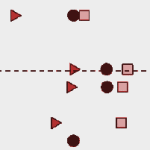Tag Archives:RNA
Helicase and ribosome share a common mechanism of nucleic acid unwinding
How selenium is incorporated into proteins: structural view of selenocysteine ‘recoding’
Whole-cell computational models can predict how genes influence behavior
An important new tool to assess chemotherapy response in cancer patients
Although chemotherapy agents are widely used in the treatment of cancer, it is not widely known that for many patients with solid tumours, only a fraction receive a survival benefit from chemotherapy. This is particularly the case
A new general principle of virology
Shin et al describe for the first time a novel strategy used by persistent viruses to temporally regulate expression of the structural proteins that make up their virus particles. The viruses that infect humans and other mammals
Punching above their weight: how the smallest RNAs offer great promise for cancer biology
Is it possible reversible and irreversible aggregation of proteins?
Living on the edge: Planctomycetes at the oxic / anoxic interface in northern wetlands
A resource for studying the role of RNA-binding proteins in human disease
Controlling gene expression in bacteria
What is necessary to be prion-like domain?
A new type of mycovirus
A small RNA, microRNA-155, “micromanages” inflammation and renewal of neurons in the brain
Sugars in circulating blood reflect breast cancer biology
A method for studying mouse mammary tumorigenesis
Metastasis is the last step of primary breast cancer progression in which cells from the primary tumor leave and go to other organs. Breast cancer cells often metastasize to the lung, among other organs. Each step in






















